The Orbit Of Jupiter Protects The Earth From Asteroids.
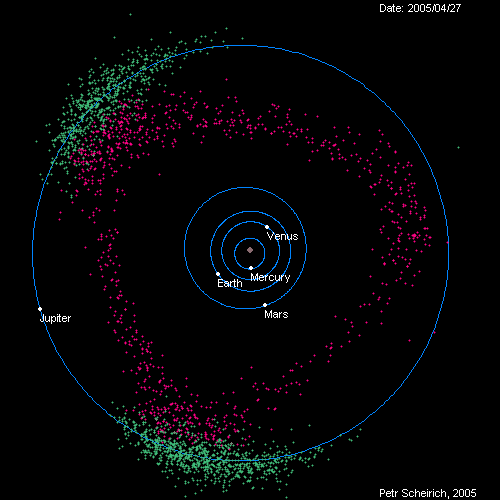
The orbit of Jupiter protects the Earth from asteroids.
More Posts from Science-is-magical and Others
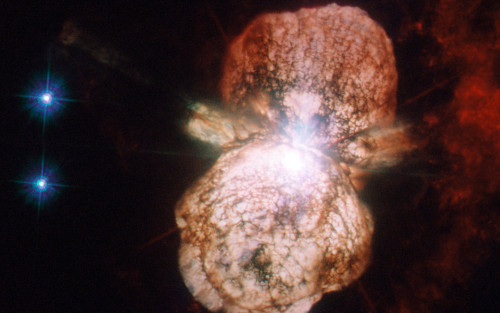
Oh hey, not a big deal, but the hubble took a picture of a star that’s nearing supernova status
The Hubble Space telescope just sent back a new photo of the Twin Jet Nebula. Here’s what it looked like in 1997:

And now …

Whoa. But wait, we also got an updated image of the merging galaxies NGC 6240. What it looked like in 2008:

And today:

Science, you’re the best. Oh, and the explanation behind those merging galaxies and their black holes is wild.
If Earth had Saturn’s Rings
From an excellent post by Jason Davis
From Washington, D.C., the rings would only fill a portion of the sky, but appear striking nonetheless. Here, we see them at sunrise.

From Guatemala, only 14 degrees above the equator, the rings would begin to stretch across the horizon. Their reflected light would make the moon much brighter.

From Earth’s equator, Saturn’s rings would be viewed edge-on, appearing as a thin, bright line bisecting the sky.

At the March and September equinoxes, the Sun would be positioned directly over the rings, casting a dramatic shadow at the equator.

At midnight at the Tropic of Capricorn, which sits at 23 degrees south latitude, the Earth casts a shadow over the middle of the rings, while the outer portions remain lit.

via x
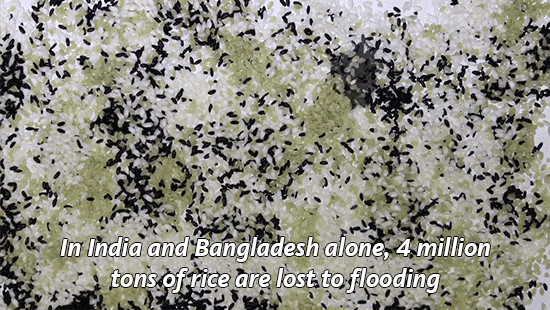
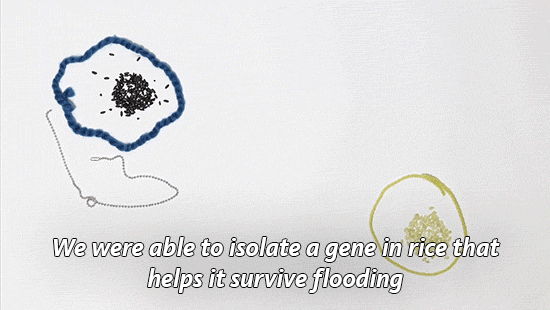
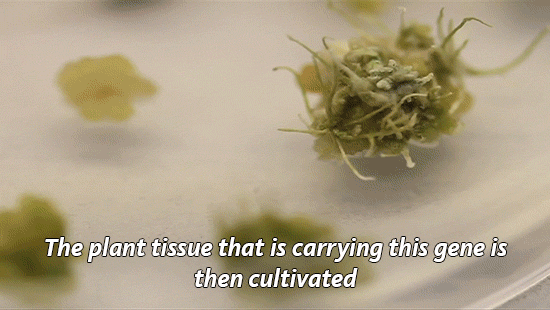
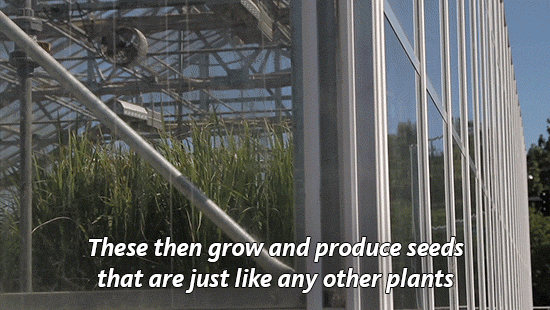
Why we need GMOs to survive climate change
Genetically modified organisms get a bad rap for many reasons, but we’ve actually been genetically altering what we eat since the dawn of human history.
“For 10,000 years, we have altered the genetic makeup of our crops,”explains UC Davis plant pathology professor Pamela Ronald.
“Today virtually everything we eat is produced from seeds that we have genetically altered in one way or another.” (You can read more about Ronald’s thoughts on genetically engineered food here.)
Right now her focus is on rice. It’s one of our basic crops and without it, we would struggle to feed much of the world.
With climate change, we’re seeing an increase in flooding in places like India and Bangladesh, which makes it harder to grow this important food staple.
So Ronald and her lab have developed a flood-tolerant strain of rice. It’s known as Sub1a or “scuba rice” and millions of farmers in South Asia are now growing it in their fields.

Today is National Food Day, a day dedicated to hunger awareness. But as we focus on food insecurity, we need to talk more about how global warming will make the problem worse.
As our climate continues to heat up, it has huge impacts on what foods we are able to grow. Will our crops be able to survive droughts and floods? The University of California leads six labs that are working to develop other climate-resilient crops including chickpea, cowpea and millet.
Find out what other scientists are doing to improve our food.

English-speaking parents tend to use vague, one-size-fits-all verbs as they emphasize nouns: cars, trucks, buses, bicycles and scooters all simply “go.” Mandarin speakers do the opposite: they use catchall nouns such as “vehicle” but describe action—driving, riding, sitting on, pushing—with very specific verbs. “As a native English speaker, my first instinct when a baby points is to label,” Tardif says. Her babysitter, on the other hand, was a native Mandarin speaker, whose instinct was to name the action she thought the child was trying to achieve.
via Twitter

The existence of large numbers of molecules in winds powered by supermassive black holes at the centers of galaxies has puzzled astronomers since they were discovered more than a decade ago. Molecules trace the coldest parts of space, and black holes are the most energetic phenomena in the universe, so finding molecules in black hole winds was like discovering ice in a furnace.
Astronomers questioned how anything could survive the heat of the energetic outflows, but a new theory from researchers in Northwestern University’s Center for Interdisciplinary Research and Exploration in Astrophysics (CIERA) predicts that these molecules are not survivors at all, but brand-new molecules, born in the winds with unique properties that enable them to adapt to and thrive in the hostile environment.
Continue Reading.
-
 skitterspam reblogged this · 2 weeks ago
skitterspam reblogged this · 2 weeks ago -
 skitterspam reblogged this · 2 weeks ago
skitterspam reblogged this · 2 weeks ago -
 noelia-diaz06 liked this · 2 weeks ago
noelia-diaz06 liked this · 2 weeks ago -
 rosarosierose liked this · 2 weeks ago
rosarosierose liked this · 2 weeks ago -
 tothemoonandbackagain liked this · 2 weeks ago
tothemoonandbackagain liked this · 2 weeks ago -
 poppinz reblogged this · 2 weeks ago
poppinz reblogged this · 2 weeks ago -
 poppinz liked this · 2 weeks ago
poppinz liked this · 2 weeks ago -
 theblogformerlyknownasgreychan liked this · 2 weeks ago
theblogformerlyknownasgreychan liked this · 2 weeks ago -
 fayeastria reblogged this · 2 weeks ago
fayeastria reblogged this · 2 weeks ago -
 alexthespaceace liked this · 3 weeks ago
alexthespaceace liked this · 3 weeks ago -
 warmbloodxtoxic reblogged this · 1 month ago
warmbloodxtoxic reblogged this · 1 month ago -
 babypinktae reblogged this · 1 month ago
babypinktae reblogged this · 1 month ago -
 babypinktae liked this · 1 month ago
babypinktae liked this · 1 month ago -
 astrowaffles reblogged this · 1 month ago
astrowaffles reblogged this · 1 month ago -
 dreaming-notsleeping liked this · 1 month ago
dreaming-notsleeping liked this · 1 month ago -
 the-second-reason reblogged this · 1 month ago
the-second-reason reblogged this · 1 month ago -
 the-second-reason liked this · 1 month ago
the-second-reason liked this · 1 month ago -
 whiteraven13 reblogged this · 1 month ago
whiteraven13 reblogged this · 1 month ago -
 words-to-accomplish-something reblogged this · 1 month ago
words-to-accomplish-something reblogged this · 1 month ago -
 glitchylaptop liked this · 1 month ago
glitchylaptop liked this · 1 month ago -
 lukegoldencurls liked this · 1 month ago
lukegoldencurls liked this · 1 month ago -
 dodojavelpelo liked this · 1 month ago
dodojavelpelo liked this · 1 month ago -
 cherchezlafatfemme reblogged this · 1 month ago
cherchezlafatfemme reblogged this · 1 month ago -
 well-dressed-cow reblogged this · 1 month ago
well-dressed-cow reblogged this · 1 month ago -
 well-dressed-cow liked this · 1 month ago
well-dressed-cow liked this · 1 month ago -
 krustyspacepimpadventurediary reblogged this · 1 month ago
krustyspacepimpadventurediary reblogged this · 1 month ago -
 smoooore liked this · 1 month ago
smoooore liked this · 1 month ago -
 slumsaintt reblogged this · 1 month ago
slumsaintt reblogged this · 1 month ago -
 ticklingmesoftly liked this · 1 month ago
ticklingmesoftly liked this · 1 month ago -
 vilmublue reblogged this · 1 month ago
vilmublue reblogged this · 1 month ago -
 magnificentbitchface reblogged this · 1 month ago
magnificentbitchface reblogged this · 1 month ago -
 dark-night-of-the-clownfish reblogged this · 1 month ago
dark-night-of-the-clownfish reblogged this · 1 month ago -
 cottoncandyswirl828 liked this · 1 month ago
cottoncandyswirl828 liked this · 1 month ago -
 harperscout liked this · 1 month ago
harperscout liked this · 1 month ago -
 calamitoustales reblogged this · 1 month ago
calamitoustales reblogged this · 1 month ago -
 eclemon reblogged this · 1 month ago
eclemon reblogged this · 1 month ago -
 rosiethekitten liked this · 1 month ago
rosiethekitten liked this · 1 month ago -
 jettherat reblogged this · 1 month ago
jettherat reblogged this · 1 month ago -
 jettherat liked this · 1 month ago
jettherat liked this · 1 month ago -
 shrimpshrampshromp reblogged this · 1 month ago
shrimpshrampshromp reblogged this · 1 month ago -
 just-a-nowhere-giirl liked this · 1 month ago
just-a-nowhere-giirl liked this · 1 month ago -
 ateloyellow liked this · 1 month ago
ateloyellow liked this · 1 month ago -
 smokinpumpkin liked this · 1 month ago
smokinpumpkin liked this · 1 month ago -
 waldwasser reblogged this · 1 month ago
waldwasser reblogged this · 1 month ago -
 bread-clown reblogged this · 1 month ago
bread-clown reblogged this · 1 month ago -
 chibichix liked this · 1 month ago
chibichix liked this · 1 month ago -
 solarhorizons liked this · 1 month ago
solarhorizons liked this · 1 month ago -
 geckotony liked this · 1 month ago
geckotony liked this · 1 month ago -
 glasstown-resident reblogged this · 1 month ago
glasstown-resident reblogged this · 1 month ago -
 usearki reblogged this · 1 month ago
usearki reblogged this · 1 month ago


